AMD Launches V2000 Ryzen Embedded SOCs With up to Eight 7nm Cores and Radeon Graphics
7nm, Zen 2, and Vega ride again
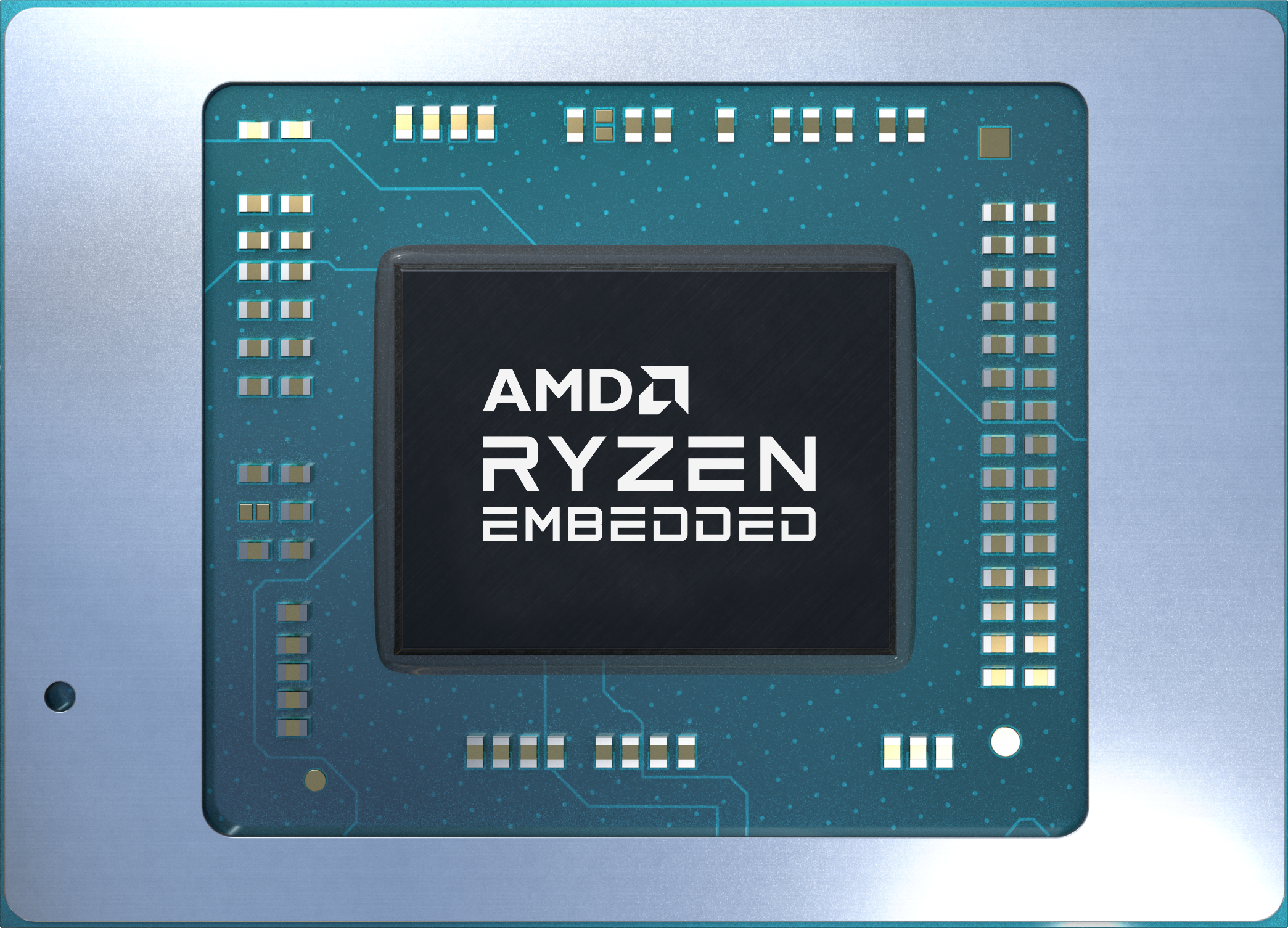
AMD announced its new Ryzen Embedded V2000 SoCs today, which brings the company's Zen 2 architecture to the embedded market for the first time in the form of the "Renoir" SoC. Paired with the 7nm process, AMD doubled the number of cores to eight over the existing Raven Ridge V1000 processors and provide up to twice the performance per watt and a 15% increase in instruction per cycle (IPC) throughput. That's not to mention a 30% uptick in single-threaded performance and 40% better graphics performance.
The V2000 chips are designed for long-life applications in MiniPCs, industrial systems, thin clients, and handheld digital gaming applications, among other target applications. The processors are designed to prioritize power efficiency, long-term reliability, and long lifecycles over other factors, with sheer performance often being a secondary consideration. As such, it isn't surprising to find the chips with the previous-gen 7nm process paired with the Zen 2 microarchitecture, as opposed to the new Zen 3 process found on the Ryzen 5000 series processors.
| Row 0 - Cell 0 | Coress/Threads | Base/Boost Freq. | TDP | Radeon Vega Compute Units (CU) | GPU Freq. |
| Ryzen Embedded V2748 | 8/16 | 2.9 / 4.25 GHz | 35-54W | 7 | 1.6 GHz |
| Ryzen Embedded V1807B | 4/8 | 3.35 / 3.8 GHz | 35-54W | 11 | 1.3 |
| Ryzen Embedded V2546 | 6/12 | 3.0 / 3.95 GHz | 35-54W | 6 | 1.5 GHz |
| Ryzen Embedded V1756B | 4/8 | 3.25 / 3.6 GHz | 35-54W | 8 | 1.3 |
| Ryzen Embedded V2718 | 8/16 | 1.7 / 4.15 GHz | 10-25W | 7 | 1.6 GHz |
| Ryzen Embedded V1605B | 4/8 | 2.0 / 3.6 GHz | 12-25W | 8 | 1.1 |
| Ryzen Embedded V2516 | 6/12 | 2.1 / 3.95 GHz | 10-25W | 6 | 1.5 GHz |
| Ryzen Embedded V1202B | 2/4 | 2.3 / 3.2 GHz | 12-25W | 3 | 1.0 |
AMD splits the V2000 series into 35-54W and 10-25W models with configurable TDPs that tailor them for various applications. The 14nm V1000 series, announced in February 2018, comes with up to four cores, but the new models stretch up to eight cores and come armed with 8MB of L3 cache. Also, the chips jump from a minimum four-core configuration to six cores. As before, the chips come in a BGA package, so they aren't socketed.
The Ryzen Embedded V2000 series also comes with the Vega integrated graphics engine, but due to AMD's re-working of the compute cores, these models come with fewer CUs but offer more performance. The chips support up to four 4K60 monitors and connectivity consists of HDMI 2.1 and Display Port 1.1.
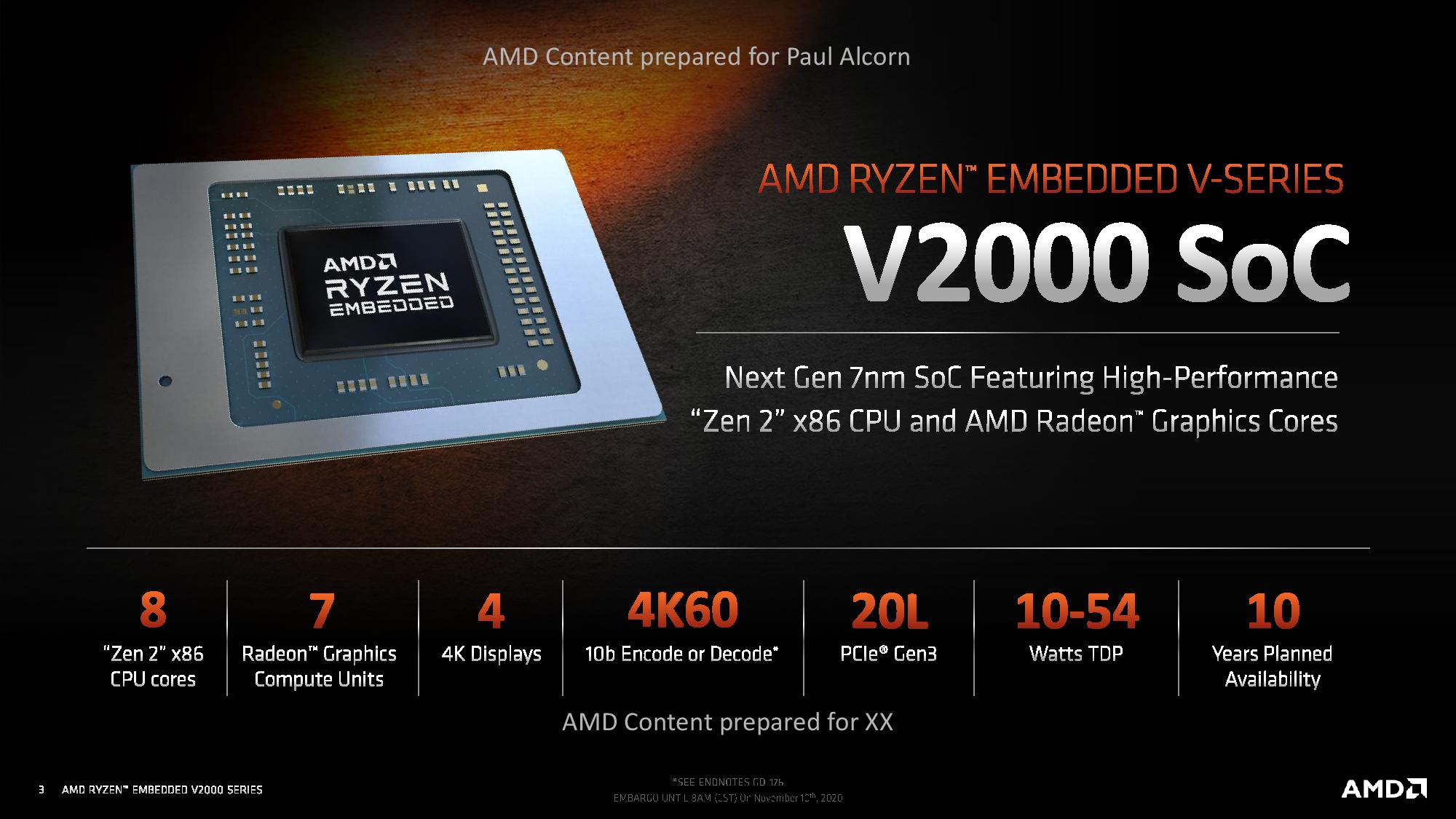
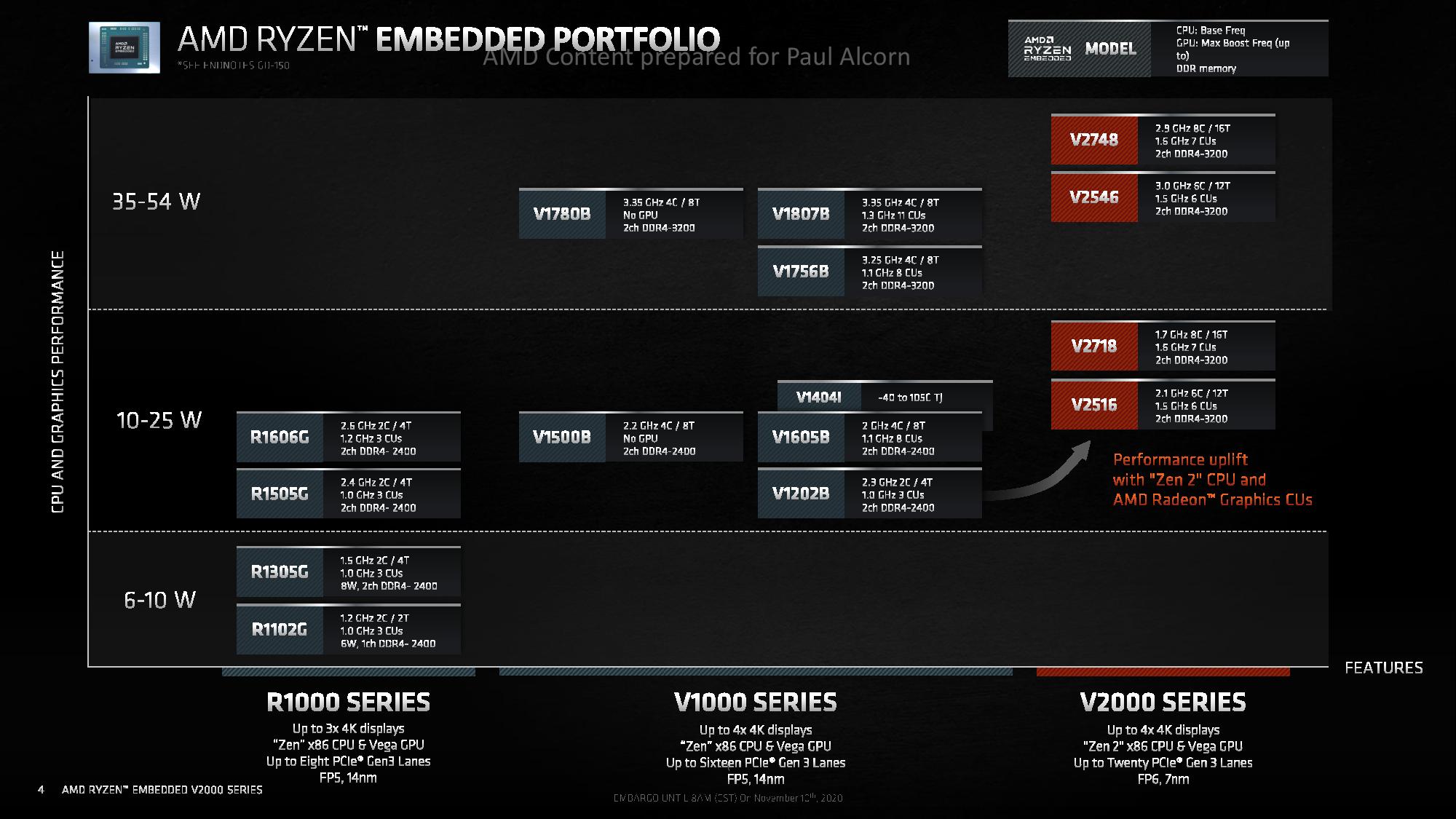
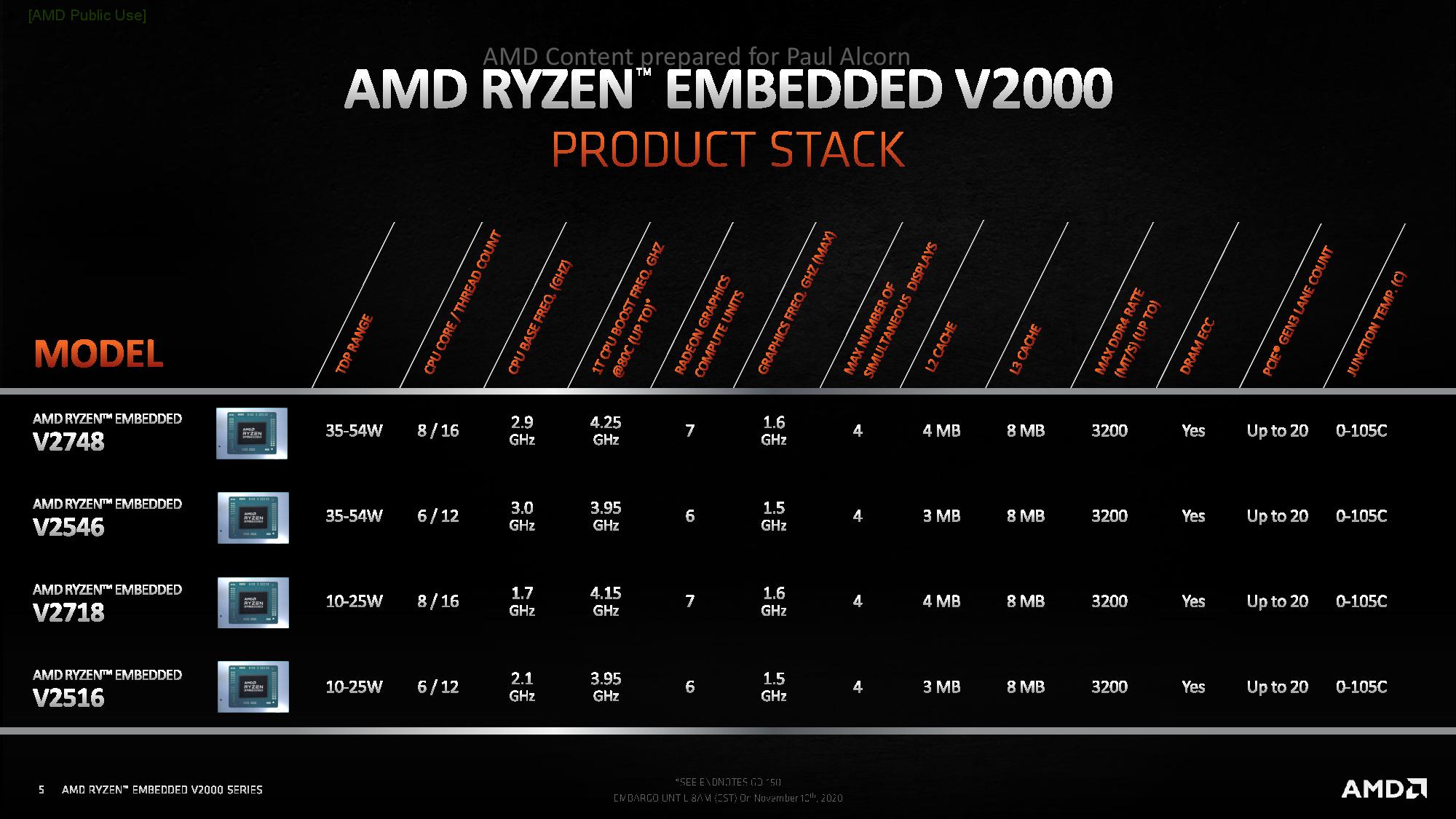
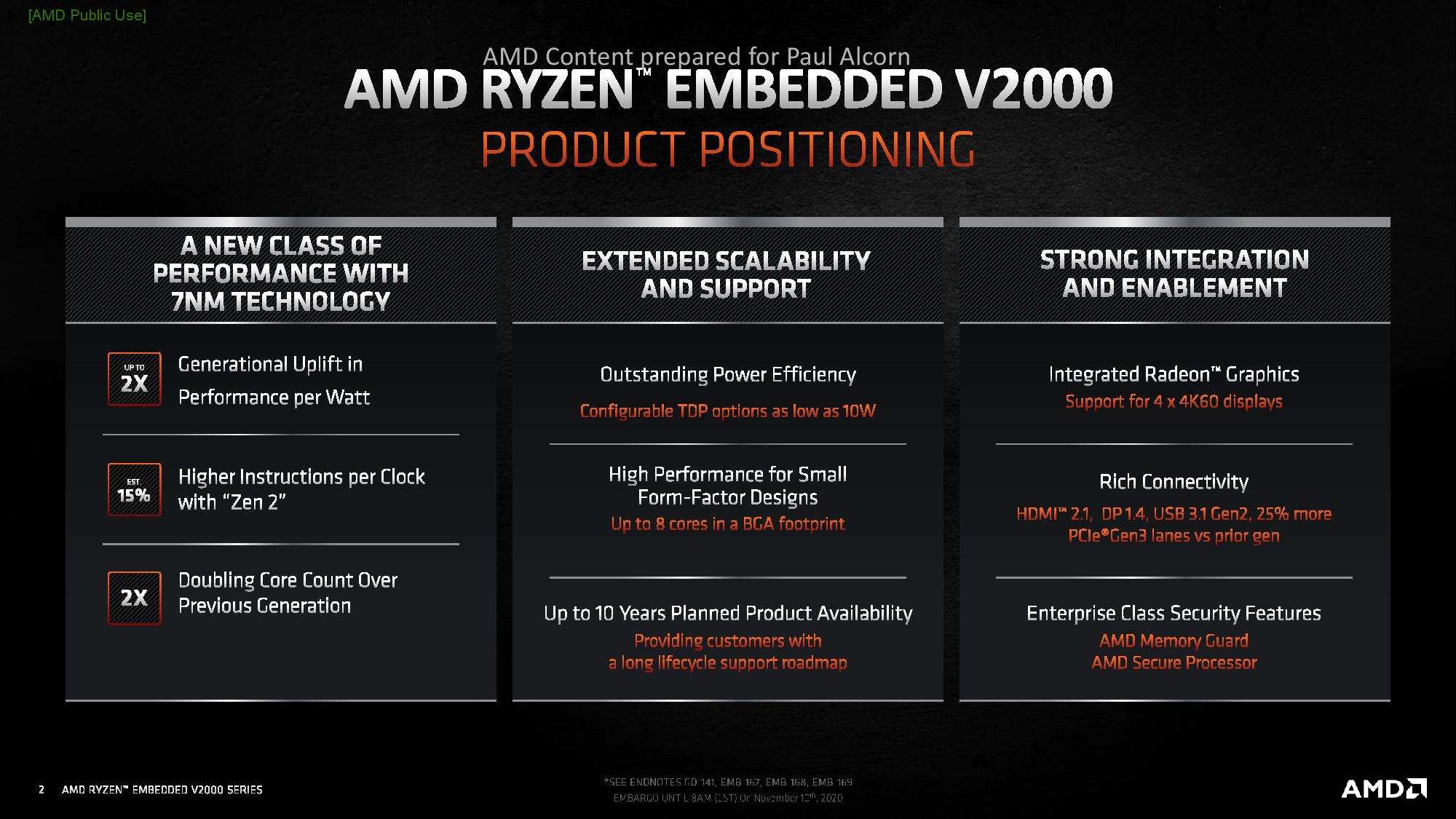
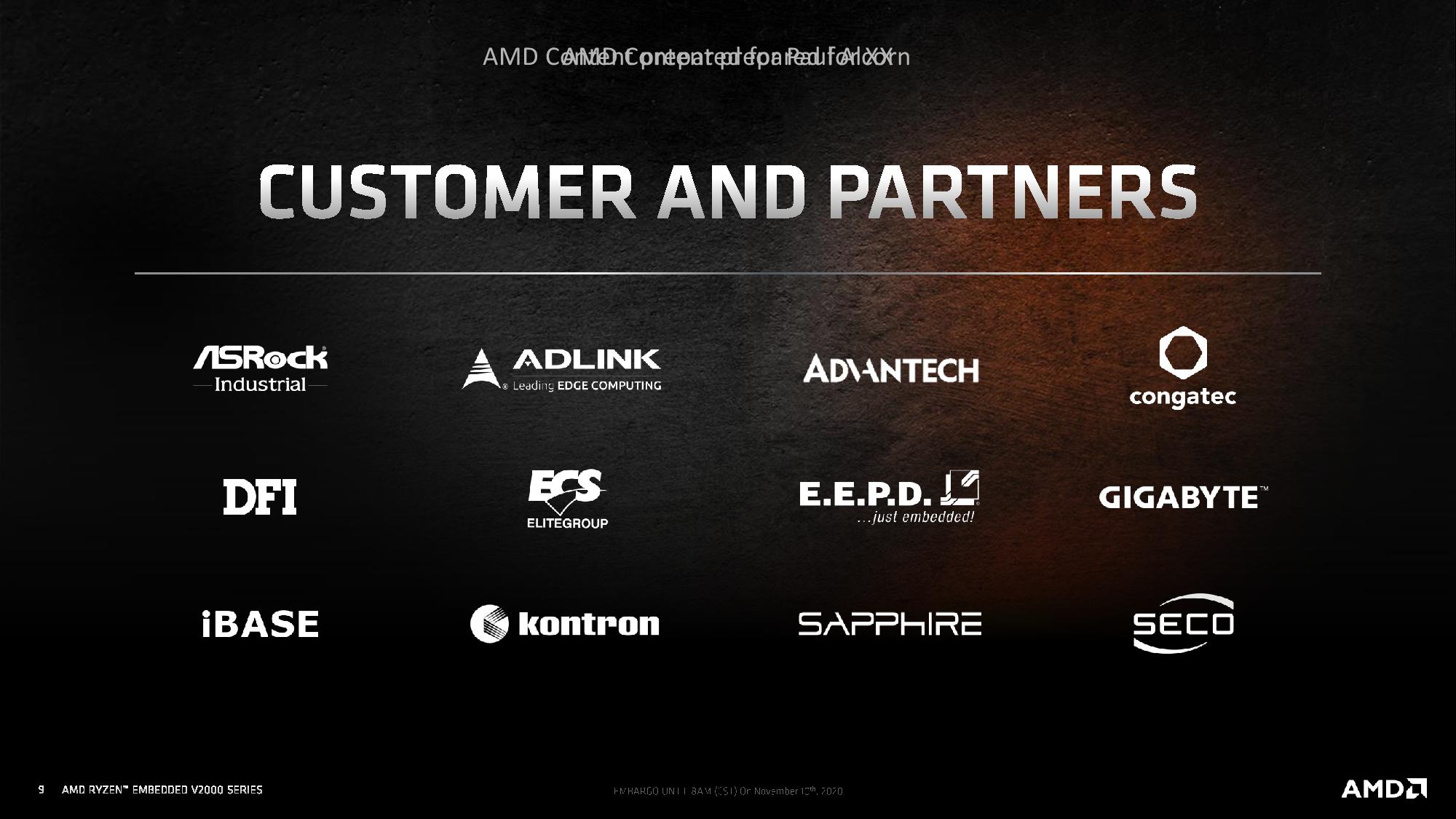
The V2000 processors still come with the PCIe Gen 3 connection (up to 20 lanes) instead of the PCIe 4.0 interface found on the consumer processors. This is likely a decision to prioritize power consumption for the low-power target market, which doesn't need blazing-fast connectivity from peripherals. However, the jump to 20 lanes is a 25% improvement, though, which offers expanded connectivity options in lieu of improved throughput. AMD also added support for USB 3.1 Gen2.
As with all extended lifecycle processors, AMD plans for 10 years of availability and whips in its Memory Guard and Secure Processor features to keep the chips secure.


As you would expect with twice the cores, AMD's provided benchmarks show a marked improvement in multi-threaded performance in Cinebench, but we also see up to a 30% gain in single-threaded work. The Vega graphics units also provide a 40% generational performance uplift over the previous-gen models. The performance deltas become are also pronounced when compared to Intel's Core i7-1010U and Core i7-9750H.
Get Tom's Hardware's best news and in-depth reviews, straight to your inbox.

Paul Alcorn is the Editor-in-Chief for Tom's Hardware US. He also writes news and reviews on CPUs, storage, and enterprise hardware.
-
HideOut Could make a nice HTPC machine with the HDMI 2.1. Should do 4K@120fps yes? Now when we find mini PC's with them is the question.Reply -
deesider Reply
Mini-PCs using embedded SOCs tend to be, relatively, very expensive. Not really worth it for HTPC. An ASRock DeskMini or a mini-ITX build is much better value.HideOut said:Could make a nice HTPC machine with the HDMI 2.1. Should do 4K@120fps yes? Now when we find mini PC's with them is the question.